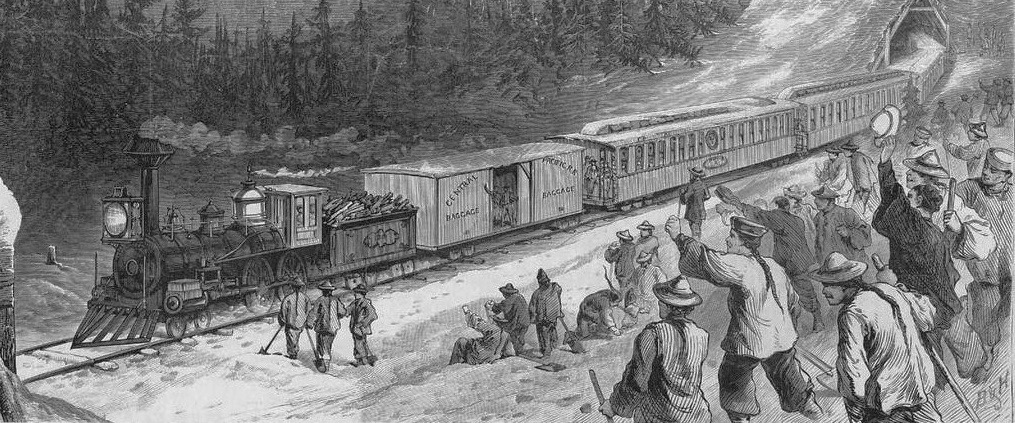The construction of the Transcontinental Railroad stands as one of the crowning achievements of American engineering history, symbolizing the intertwining of progress and tenacity. However, the narrative surrounding this monumental endeavor is incomplete without the integral contributions of Chinese immigrant laborers. These individuals, marginalized in popular historical accounts, offer a profound lens through which to examine themes of strength, sacrifice, and cultural relativism in the face of adversity.
As the United States sought to span its vast territories with a railway network, it faced an acute labor shortage. The Pacific Railroad Act of 1862 accelerated the demand for a workforce capable of undertaking grueling labor under harsh conditions. Enter the Chinese immigrant workers, arriving largely in the mid-19th century, who represented a determined effort to escape the socio-political upheavals and economic instability of their homeland. Their migration was not merely a story of seeking better opportunities; it was a profound act of resilience against insurmountable odds, characterized by an indomitable spirit.
The influx of Chinese workers was spurred by the Gold Rush and subsequent economic opportunities. However, this was a double-edged sword. Initial welcomes morphed swiftly into widespread resentment among other laborers, manifesting in both social ostracization and violent backlash. The Chinese community faced pervasive discrimination yet persisted. Ultimately, they played a critical role in building the Western sections of the railroad, enduring grueling conditions such as extreme weather, treacherous landscapes, and hazardous work environments. These conditions are testament to their collective fortitude and commitment to the greater good.
Cultural relativism facilitates deeper understanding of the varied experiences and values that construct the framework of a society. In examining the lived experiences of Chinese railroad workers, one observes a profound display of communal identity and cohesion, contrasting sharply with the prevailing Eurocentric narratives of individualism and rugged independence. Chinese immigrants often employed a collectivist ethos, drawing strength from their cultural heritage. The concept of “saving face,” or maintaining dignity and respect both within and outside the community, served as a motivating factor in their laborious contributions.
The construction of the railroad not only provided economic opportunities but also fostered a unique Chinese-American identity. The labor of these individuals birthed a dual legacy: they were both builders of essential infrastructure and subjects of systemic oppression. This paradox invites reflections on the complexities of their contributions. Many Chinese workers languished in deplorable conditions often earning a fraction of what their white counterparts made, simultaneously navigating an environment rife with prejudice while holding on to cultural practices that offered them solace and identity.
Throughout their struggles, the symbolism inherent in their labor cannot be overlooked. Each rail laid and tunnel carved was a testament to their relentless contribution, highlighting their vital role in the nation’s expansion. The railroad became a medium upon which the aspirations of these workers transcended mere survival. It was a pathway to both economic mobility and cultural integration, albeit fraught with obstacles.
Moreover, the sacrifices made by these workers were often not well-documented nor appreciated within the broader narrative of American history. The 1882 Chinese Exclusion Act exemplified the peak of societal rejection. A law designed to curtail Chinese immigration, it reflected fears of the ‘other’ and reinforced a culture of exclusion that would resonate for generations. The experiences of Chinese railroad workers underscore the necessity for cultural relativism, prompting a re-evaluation of contemporary values and prejudices. By understanding their sacrifices through an empathetic lens, one recognizes the breadth of their contributions beyond the confines of labor.
Resilience among these workers was manifest not only in their daily endeavors but also in their community-building efforts. As they settled in enclaves, often referred to as Chinatowns, they created microcosms of their homeland, sustaining cultural practices, language, and traditions. These neighborhoods served as vital support structures, fostering solidarity against external hostilities and reinforcing cultural identity. In the face of adversity, they crafted a sense of belonging that was crucial for their survival, revealing the depth of human adaptability.
Understanding the narrative of Chinese railroad workers through the prism of cultural relativism invites a nuanced engagement with historical events. It compels contemporary society to confront the legacies of exclusionary practices and to appreciate the multifaceted identities that constitute the American narrative. By shining a light on the experiences of these workers, and recognizing their strength and sacrifice, we enrich our understanding of resilience within marginalized communities. Their story is not mere historical footnote; it is a profound reminder of the enduring spirit of human perseverance.
In re-examining the history of the Transcontinental Railroad through the lens of the Chinese immigrant experience, we challenge the singular heroic narratives and embrace a tapestry woven from diverse threads of labor, sacrifice, resilience, and community. The railroad, one of the greatest symbols of American ingenuity, was propelled into existence by countless nameless hands. In remembering these contributions, we honor a legacy that must not be forgotten, that of hope against adversity and the unyielding pursuit of dignity.
